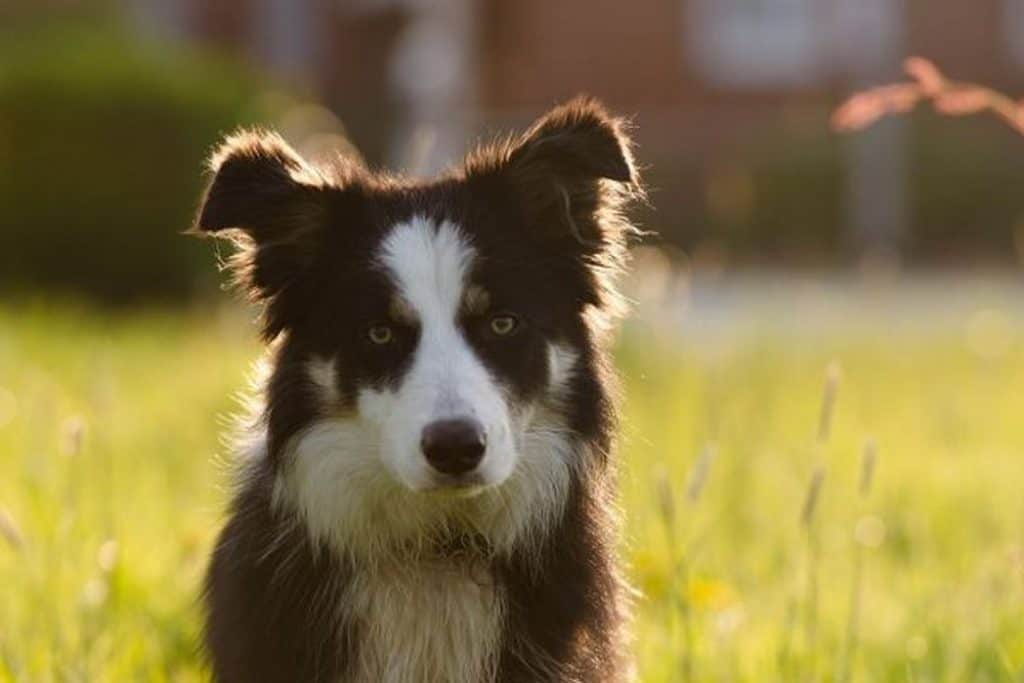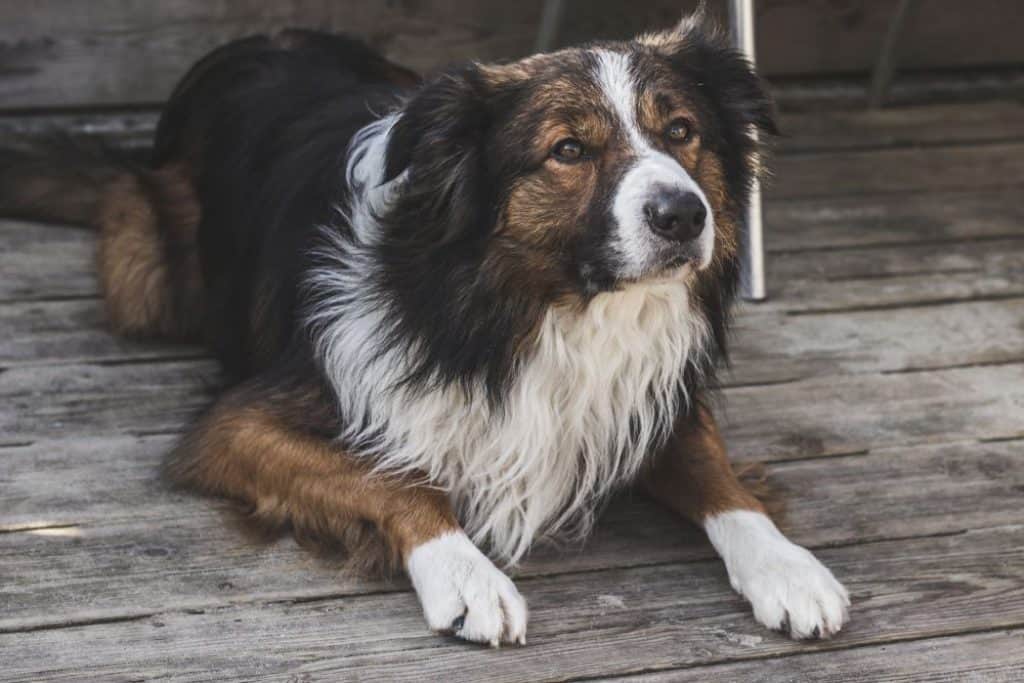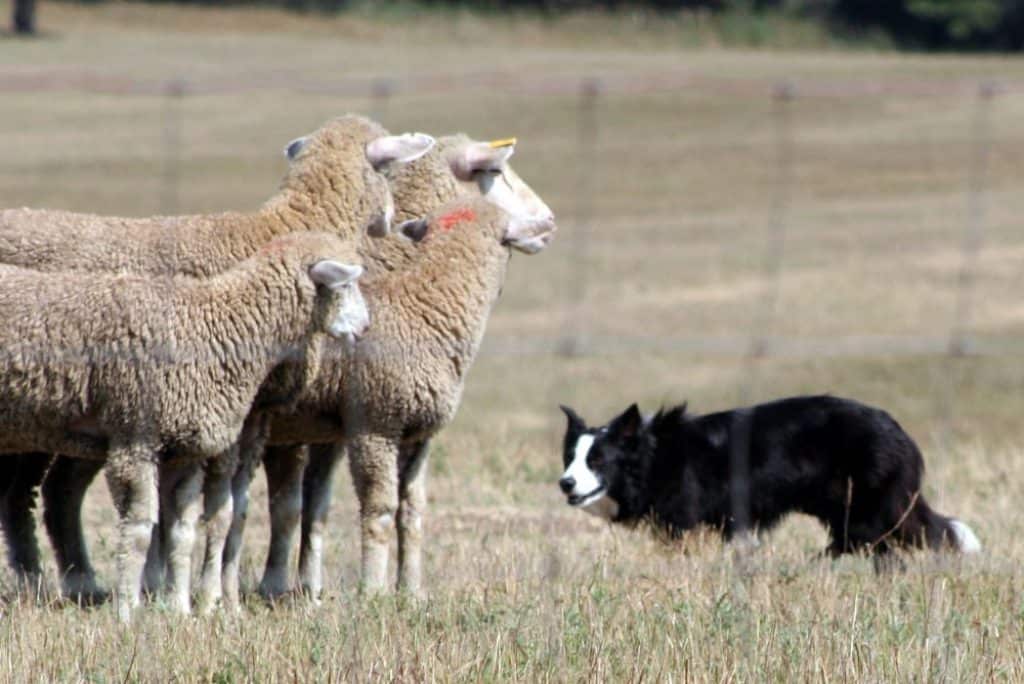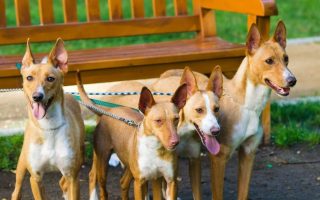Why does my border collie stare at me?
Before answering this question, it is important to know that although the Border Collie has a receptive, intelligent, alert, energetic, tenacious, and enthusiastic temperament; it is not the kind of dog you can let run around the neighborhood with your kids.
This is a breed of working dog that emerged on the border between Scotland and England as a shepherd dog, which due to its characteristics, makes it an ideal dog, especially for working with flocks of sheep.
Another characteristic that this particular breed has developed over two hundred years of selective breeding is called herding instinct.
The herding instinct is nothing more than the modification of the hunting instinct of the wolf. Border Collies uphold the wolf’s instinct to circle prey.
Anything that the dog fixes on and manages to move reinforces in this canine the belief that it has moved it so that he may sometimes be able to stare at something for hours.
Read on to learn more about why the Border Collie stares.
[wpsm_toplist]
Why Does My Border Collie Stare At Me?

For a Border Collie, eye contact is key. Well, it’s a natural part of its body language and canine communication.
Keep in mind the Border Collie is very intelligent and that it is through the look that the dog obtains information about who is in charge of the house.
The Border Collie’s stare can signify the following aspects:
1. The sense of the owner’s gaze
The owner’s gaze can become a vicious cycle or have unintended consequences.
For example, if you only look at him when he is misbehaving, the dog may learn misbehavior to get you to look at him or get your attention.
That is why you should have positive attention regularly so that the dog does not attract your attention by generating negative attention.
This last part also applies to your children.
2. The leader guides, and the follower watches
When you stare at your Border Collie, this in his body language understands that you give him importance in the circumstance in which he is at that moment.
It is advisable to always deliver the “prize” of your gaze with intelligence.
Try not to look like one of the sheeps that HE leads.
Do not stare at your dog, either to show affection or frustration or simply out of habit; at that time, he could see you as one of the sheeps he leads.
When your Border Collie does not obey an order, complete it while putting him in position.
For example, if you have said “Sit” while you are making him adopt that position, visually ignore him.
If your dog stares at you and deliberately ignores a command from you, he is testing you, do the following:
- Don’t stare at him; that puts you on his level.
- Ignore his gaze and make him obey by making him do what you have asked him to do.
In puppies, staring may mean that he is confused and wants more information to obey and indulge you.
4. Watch him when he’s obeying you.
Reward your Border Collie with your gaze only when he is obeying, not when you are giving him instructions.
For example, when you call him, he looks down at the ground. His instincts will seduce him to see what you find so attractive.
5. Stare at the herding
The herding instinct often manifests itself in Border Collies differently than in other sheepdogs.
While other breeds tend to drive away from the herd’s flock, the Border Collie guards the herd to bring it closer to the shepherd.
These dogs, in their intelligence, do not initially use force or threat to lead the herd but rather “the gaze”: they stare at the herd in a threatening way to guide it where they want it to go.
Only when the “gaze” is not functional does a Border Collie’s natural instinct gradually increase the pressure.
It begins by barking, then nibbling, and finally bites the sheep’s legs to make them understand who the boss is.
Other considerations of why the Border Collie can stare

1. He wants to eat or walk.
Like all pets, eating and walking are two of the favorite actions of a Border Collie, and they know perfectly that only their owners can provide them.
Whether his guts crack or he needs a good walk, your dog will stare at you for these everyday pleasures.
2. He waits for an order.
Depending on the context, if a Border Collie stares at his owner, it may mean that he expects to be told what to do.
This usually happens when these outstanding dogs are immersed in a training period.
They tend to stare at their owners, waiting for a signal or order that tells them to take action, be it run, sit, lie down, stay, or eat.
3. He needs you to pay more attention.
If you are one of the owners who spend a lot of time away from home, maybe your best friend wants you to pet him or play with him.
Your Border Collie wants to be noticed and needs your love and attention.
Remember, staring at you will be a way to get your attention and that you give him the pampering and fun time he will be so grateful for.
4. He watches what you are doing.
Border Collies are curious dogs, and that is why they do not hesitate for a moment to project their gaze on whatever their owner is doing.
In addition to sniffing, your dog will seek to get closer to better understand what you are doing, whether you are dressing, cooking, watching television, etc.
Additional signals the Border Collie can send when staring.
1. Instinct herding children

Understanding and training a Border Collie is tricky, mainly because of the herding instinct that is born with it.
There is not enough training or trainer capable of completely eliminating the herding instinct of a Border Collie that has inherited it.
A Border Collie may forget or ignore all the commands that he has learned when entering a herding attitude.
When he is responding to that instinct, he will miss any stimulus that is not a sheep. He can see the wheels of a cart like a sheep, so he is sometimes run over by them before he stops chasing them.
When the Border Collie stares at children, they may be staring at them like sheep.
The owners of these dogs should teach their children that when the Border Collie begins to herd them, they stop immediately to avoid entering into this dynamic with their dog.
When the Border Collie sees that the “sheep” is not trying to escape, it usually relaxes and goes into a “normal” state of mind.
However, expecting a child under 5 to handle a situation like this is asking too much, especially if the dog comes to stand in front of him and harasses him by growling and baring his teeth.
It is advisable to lock up the dog when guests have children or must play without the supervision of an adult with ancestry over the animal.
This is why it was mentioned in the intro that Border Collies are not the kind of dog you can let run around the neighborhood with your kids.
2. Your dog is confused – Head tilted.
Border Collies that look during training, especially with that cute tilted head, are usually a little confused.
Your dog is trying to understand what you want him to do as if he is figuring out what you want!
It would be so much easier if you both spoke the same language.
If you notice that your dog is staring at you when you ask him to do something, it’s time to go back a bit in his training and find a way to communicate more effectively.
If you tell your dog to sit up and he stares at you, he goes back to the drawing board and retrains the behavior.
Take into account what is described and that your dog is not being willfully disobedient. He is confused!
3. Your dog is tense – Hard look.
The Border Collie tends to give a “hard look” before biting. But be aware that some will also look away before biting.
If you are petting a dog or approaching his food, cage, bed, or toy, and he turns his head staring at you, back away, your dog is tense.
It may take some practice to tell the difference between a “hard look” and just a longing look for treats.
Learn to give your dog space when his hard look is accompanied by the following signs:
- A stiff tail (wagging or not), immobile body.
- Mouth closed, pupils dilated (wide pupils).
- A low head, ears pinned forward or back,
- A rigid body forward or backward.
You may not see all of these signs at once but look for any combination. Dealing with canine aggression isn’t easy, but the least you can do right now is walk away.
Confronting a Border Collie is not worth it!
4. Your dog loves you – Soft eyes.
The opposite of the above is that your dog could be looking at you with soft eyes because he loves you.
This soft look at new owners can easily be mistaken for a hard look, so context is essential.
This sign that your dog loves you will likely be accompanied by a soft or wide tail wag, relaxed ears, and normal-sized pupils.
These loving glances usually occur early in the morning, when serotonin levels are highest.
Your Border Collie is unlikely to look you in the eye when he plays, eats, or trains, so assume he has a different motivation if that’s what happens.
Conclusion
Why does my border collie stare at me?
Keep in mind that herding dogs are prone to stare to control sheep, cows, goats, toys, and people.
A Border Collie’s famous “Eyeing” appears when the dog stalks a flock of animals, a toy, or a playmate.
Eyeing can be playful or severe, but it often appears on instinct when you’re in the middle of a game or in the woods.
If you notice your dog suddenly slowing down, lowering his head, and looking into the distance (or at a moving object), he’s probably in hunting or herding mode!
Owning a Border Collie is a commitment.
Before you get yours, ask yourself if you are willing to spend two years training it and about thirteen or more with a high-energy dog that anticipates your every move?
Will you want to be with a dog that will share all your joys and sorrows, as well as excel in all herding activities?
If you’re wondering exactly why does my border collie stare at me?, evaluate the context; it’s essential.
You’ll need to pay attention to what’s going on around you, the rest of your dog’s body language, as well as everything described in this blog.





